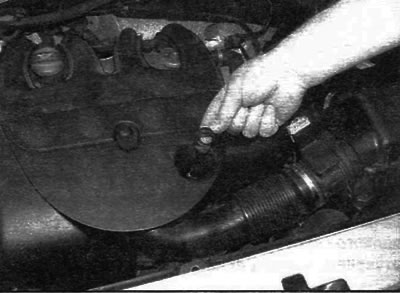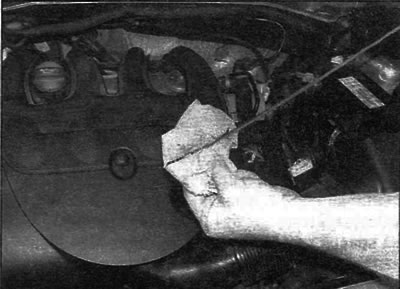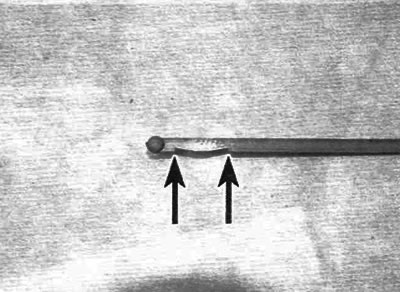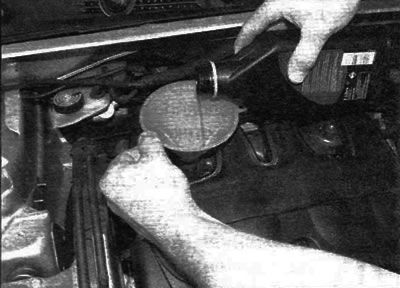Before checking
- Place the car on a flat horizontal platform.
- Check the oil level before starting the engine or not earlier than 5 minutes after stopping it.
Tip. If you check the level immediately after the trip, some of the oil will not have time to drain into the sump and the dipstick will show a low level.
Oil brand
Modern engines are very sensitive to the oil used. It is very important that you use the correct oil in your vehicle (see «Lubricants and operating fluids»).
Preventive measures
- If you have to add oil to your engine frequently, check for leaks. To do this, place a clean sheet of paper under the engine overnight and check its condition in the morning. If there are no leaks, this may mean that the oil may be burning in the engine due to worn piston rings.
- Be sure to maintain the oil level between the lower and upper marks of the pointer (pic. 3). Lack of oil can lead to very serious engine failure. A high level is also harmful - it can lead to failure of the sealing cuffs.

1. The dipstick is brightly colored for easy detection. Remove dipstick

2. Use a clean rag or paper towel to dry the bottom end. Insert a clean dipstick into the neck until it stops and remove it again

3. Check the oil level at the end of the dipstick. The level must be between the top (MAX) and bottom marks (MIN)

4. Oil should be added through the filler neck at the top of the engine. Unscrew the cover and remove it. Add oil. Use a funnel to avoid spilling oil. Add oil slowly, in small portions, periodically checking the level. Don't spill
